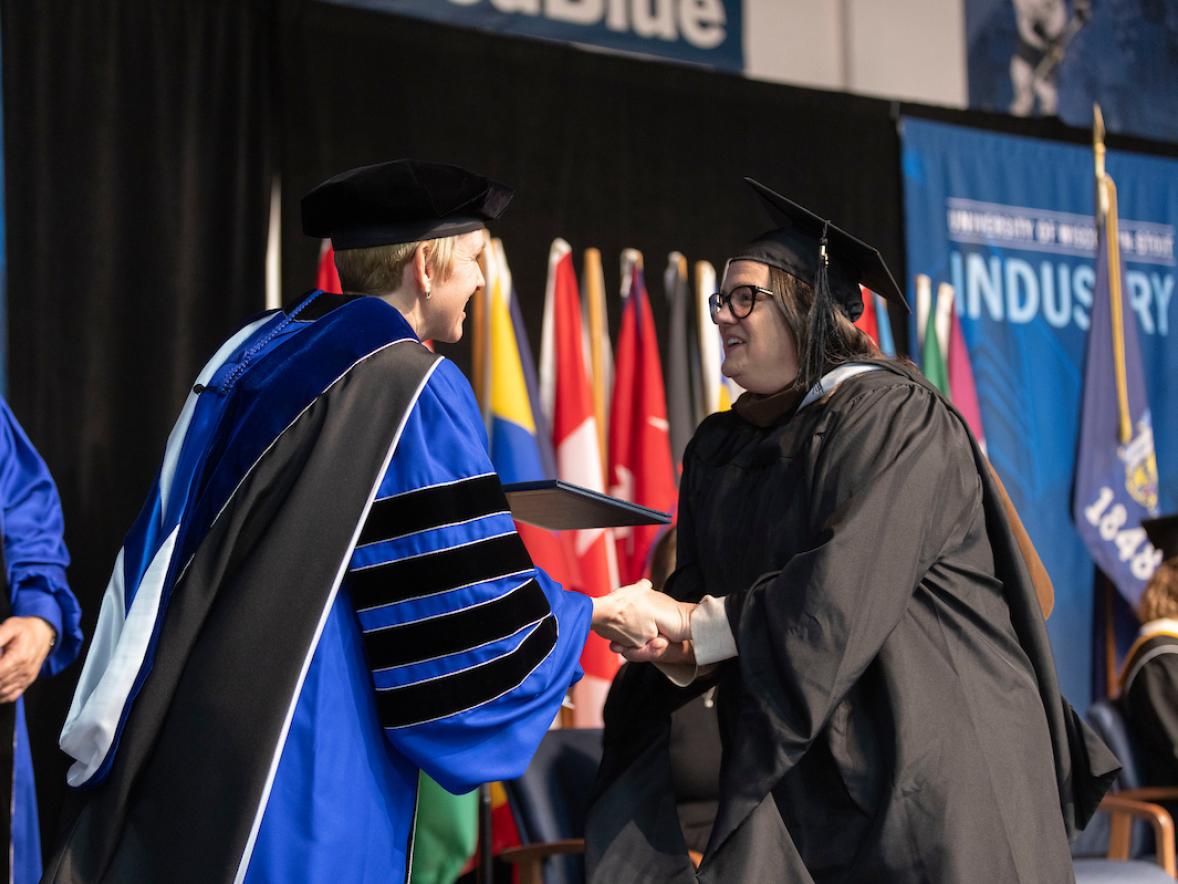In more than a decade as a meteorologist, Nick Grunseth prepared thousands of TV weather forecasts. In 2018, he had to forecast something else — his future.
Should he switch careers from WQOW TV 18 in Eau Claire to become a special education teacher? It was a big decision for a husband and father of two with no previous teaching experience.
Then the “skies” cleared. Within days of deciding to make the switch, he learned about a new opportunity through University of Wisconsin-Stout to help fill an urgent need for more special education teachers in Wisconsin.
“It’s like the stars were aligning,” Grunseth said.
He was accepted into the UW-Stout program in summer 2018. Now, less than two years later, he is about to be certified to teach special education in Wisconsin, completing the career switch.
In fact, he’s been teaching at Chippewa Falls Senior High School since last fall, on an emergency basis, after being hired last spring. He left WQOW last July.
“Some days are challenging like any job, but those little breakthroughs I can make with a student — I go home and really feel good about it. It is really rewarding,” Grunseth said.
‘Huge need’ for special education teachers
Grunseth is one of 12 students in UW-Stout’s Teachers for Every Child Access Program, an alternative pathway to certification. The university’s special education program in the School of Education received a $30,608 grant in 2018 from the University of Wisconsin System to fund one of five such proposals.
“There’s a huge need for special education teachers. It’s nationwide,” said Assistant Professor Sharon Becker, director of UW-Stout’s program. “A lot of teachers are retiring, and it’s hard to find teachers who are certified.”
More than 650 special education teachers were hired on an emergency basis statewide in 2018.
UW-Stout’s 12- to 18-month pathway to certification includes eight courses. They are delivered through a hybrid model, online and in person, plus a year of mentoring. A summer course on campus lasts two weeks.
Students in TECAP already have a four-year degree in another field. Grunseth is the only one without previous experience in a school setting. He has a bachelor’s in atmospheric and oceanic sciences from UW-Madison in 2007.
UW-Stout worked with CESA 10 of Chippewa Falls and area school districts, including Menomonie, to help address the need for special education teachers. CESA stands for Cooperative Educational Service Agency.
Becker developed the TECAP pathway to certification with UW-Stout colleagues Anthony Beardsley, Carol Johnson and Heather Klanderman and created the curriculum with Becky Marine. After the 12 students finish, UW-Stout may continue TECAP without state funding.
Becker has 25 years of experience as a special education teacher, plus she is certified to teach deaf and hard of hearing students; culturally and linguistically diverse students; and elementary education.
“A large part of being a special education teacher is about the passion you have for helping the students,” Becker said.
The UW-Stout program “has been wonderful. It’s been intense,” Grunseth said. “There’s a course on special ed law, behavior management and techniques, multiculturalism. I had 16 weeks of reading with (Assistant Professor) Terri Kohlmeier, how it’s taught and how kids learn.”
UW-Stout’s bachelor’s degree program in special education, offered on campus and online, has 130 students.
Grunseth’s parents were teachers
At Chi-Hi, Grunseth is one of 15 special education teachers, for various types of disabilities, along with 15 support personnel. He works with teens who have behavioral and emotional issues.
This spring he will teach an astronomy class made up solely of special education students. He also will co-teach two classes, economics and American government, supporting special education students in the general classroom.
Grunseth’s parents were longtime teachers in the Gilman school district, and he had always enjoyed leading the WQOW Weather Academy for children. “Teaching has been in my blood and a passion of mine,” he said.
Grunseth’s wife, Britny Gabert, is the PBIS and RTI — positive behavior and intervention and support; and response to intervention — coordinator in the Chippewa Falls school district. They have two children.
He thanked the district for the opportunity to teach. “I love working for the district. They are supportive and encouraging of staff and students. There are many supports for staff. I love coming to work every day,” he said.
###
Photos
Nick Grunseth has switched careers from TV meteorologist in Eau Claire to special education teacher at Chippewa Falls Senior High School, thanks to an alternative certification program at UW-Stout.
Sharon Becker
From left, students Staci Marvin, Beth Gerrits and Kristie Schwab work together in a TECAP class at UW-Stout.
Nick Grunseth and his wife, Britny Gabert, have a daughter, Lara, and son, Emmett.






